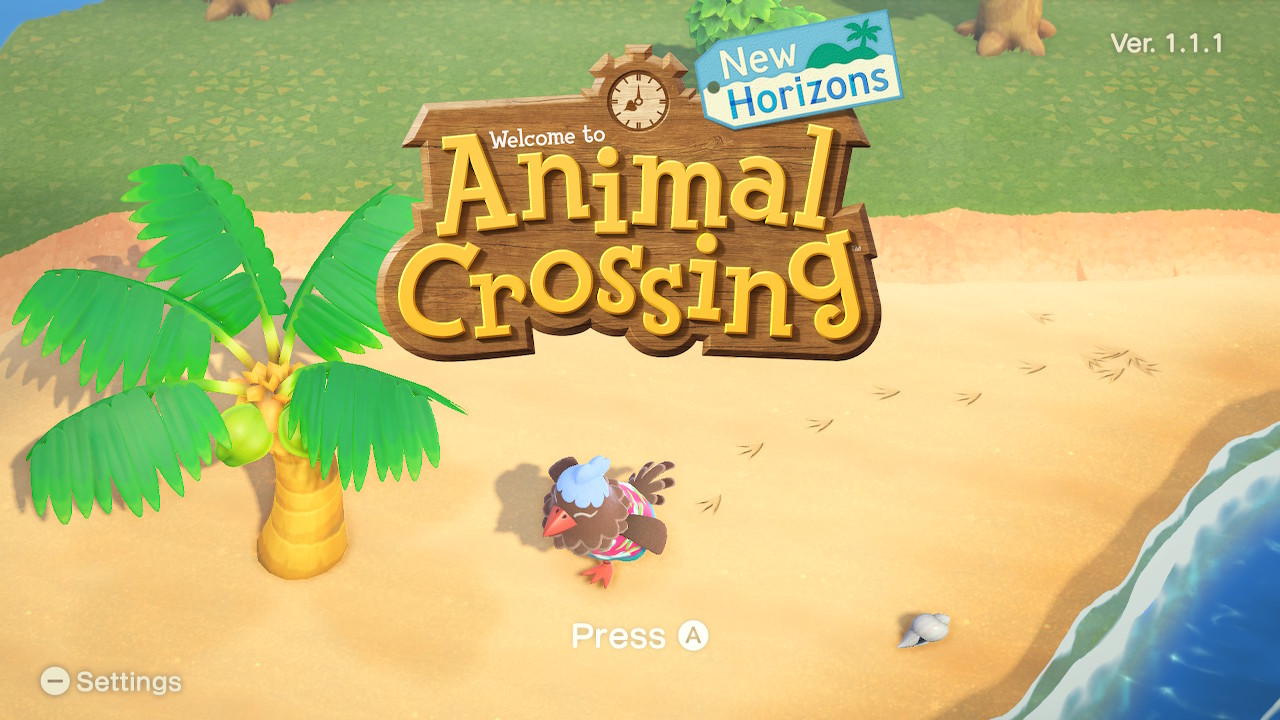
Editor’s Note: This review is a collaborative work between Ryan Pearson, and Brandon Lyttle. While Ryan did not alter the internal clock on his Nintendo Switch, Brandon did so to access later game content.
The Animal Crossing series has continued to thrive, with even those who loath anything casual keeping it as a guilty pleasure. Now the latest entry promises to let creative juices flow, and bring new animal friends to dote on. What is on the horizon for players of Animal Crossing: New Horizons?
Animal Crossing: New Horizons
Developer: Nintendo
Publisher: Nintendo
Platforms: Nintendo Switch (reviewed)
Release Date: March 20th, 2020
Players: 1-8
Price: $59.99
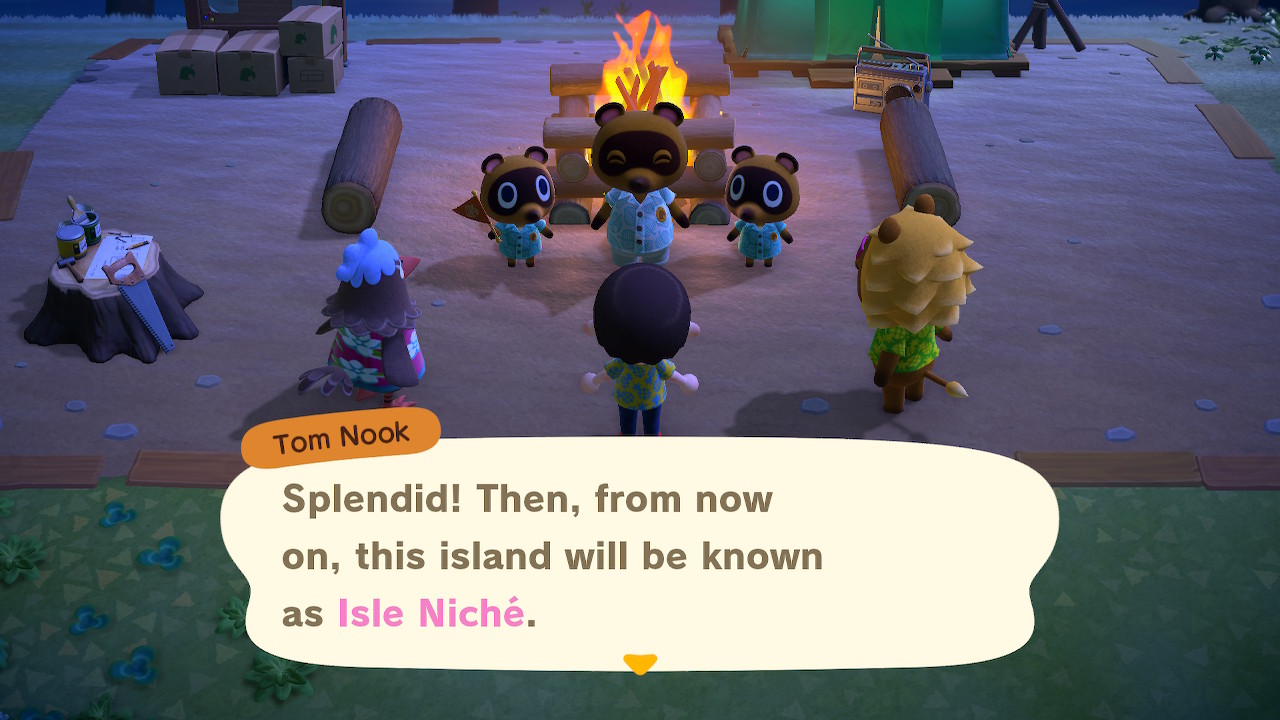
Entrepreneur Tom Nook has taken up a whole new game of real-estate; a deserted island getaway. Players pick an island in the northern or southern hemisphere (with the appropriate weather for the seasons), and the day-by-day growth begins. Pay off your debt, attract more villagers, decorate your island and homes, and make an island paradise.
In more detail, you start on an island with randomly selected native fruit trees, and two random animal villagers. Everyone starts bunking down in tents, and the first of several small changes begins even here.
Past games had villagers move in, with little control over where their homes went. This time, players can choose where their villagers future homes will go, and even move them later in the game (though you will need to move the entire plot somewhere new, rather than just nudge it a few tiles).
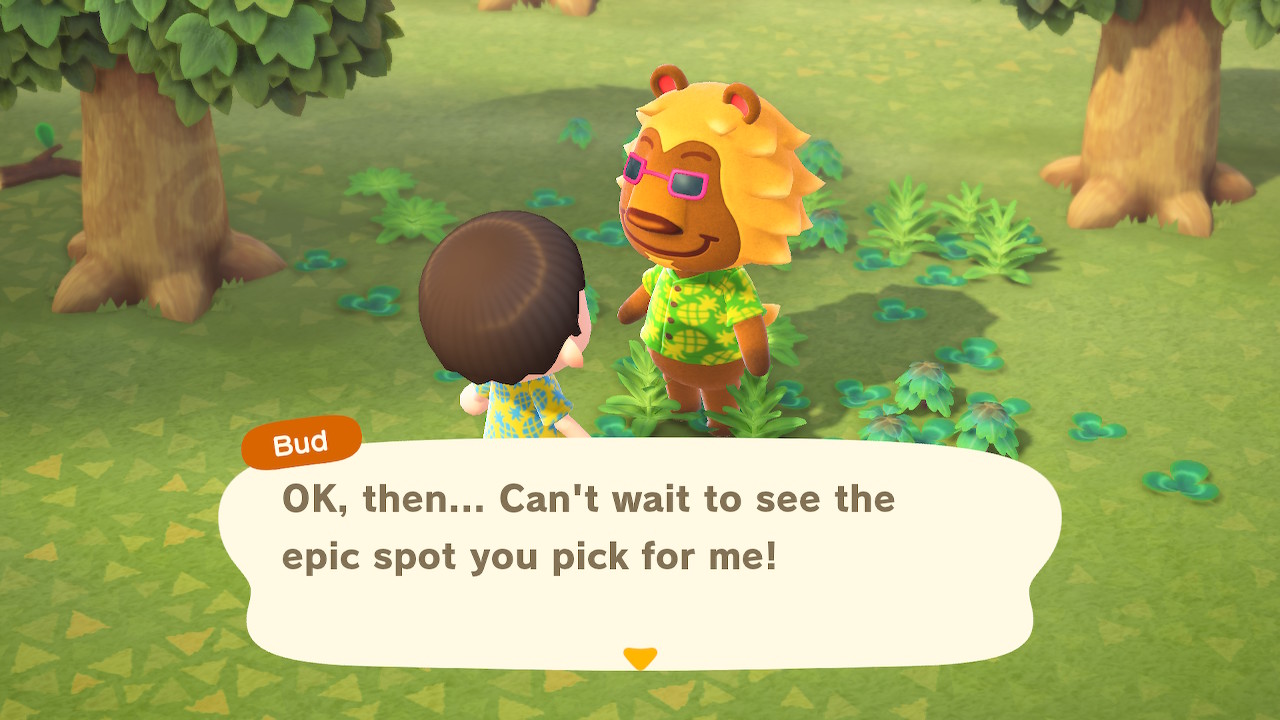
Giving players more control over randomized elements seems to be the name of the game. While players can eventually unlock the ability to create and destroy terrain, they can also move objects by a half a tile (much like in Happy Homes), and customize some of the objects they create; changing its color or even style.
Eating fruit will also let them uproot trees to be replanted, or destroy rocks. Players can create patterns to be used on their own clothes, some furniture, or even placed on the ground (though you can make true pathways this time around).
The focus on DIY gives players a real sense of progression, despite how few resource types there are (or needed). While gathering resources is sometimes tied to progress (such as making the shop facility), players can make their own tools, and create furniture. Even so, some items cannot be crafted, and can only be bought from the aforementioned shop.
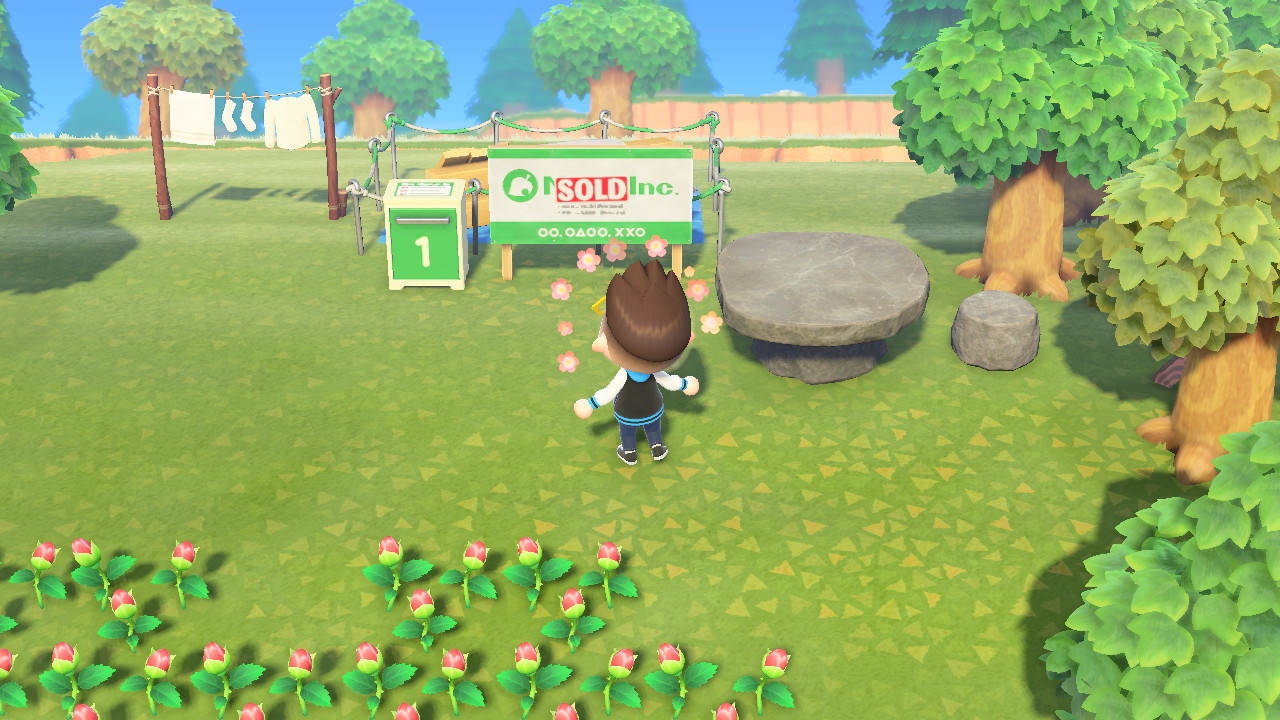
Furniture is not restricted to the home however- players can put their decorations almost anywhere. A bed on the beach, an amp next to some trees, there are no restrictions other than your own taste.
Other encouragement comes from the new “Nook Miles.” Taking inspiration from mobile games, players are rewarded with points for milestones, daily tasks, and a log-in bonus. Most of these you will achieve as you naturally scavenge for materials, and Nook even allows you to pay for your initial debt in these miles.
You’ll spend most of your Nook Miles on special tickets, that take you to a randomly generated island. Here is where you can initially find new villagers, and gather resources. You can also pick up things you do not have native to your island, such as other fruit trees, flowers, bugs, and fish.
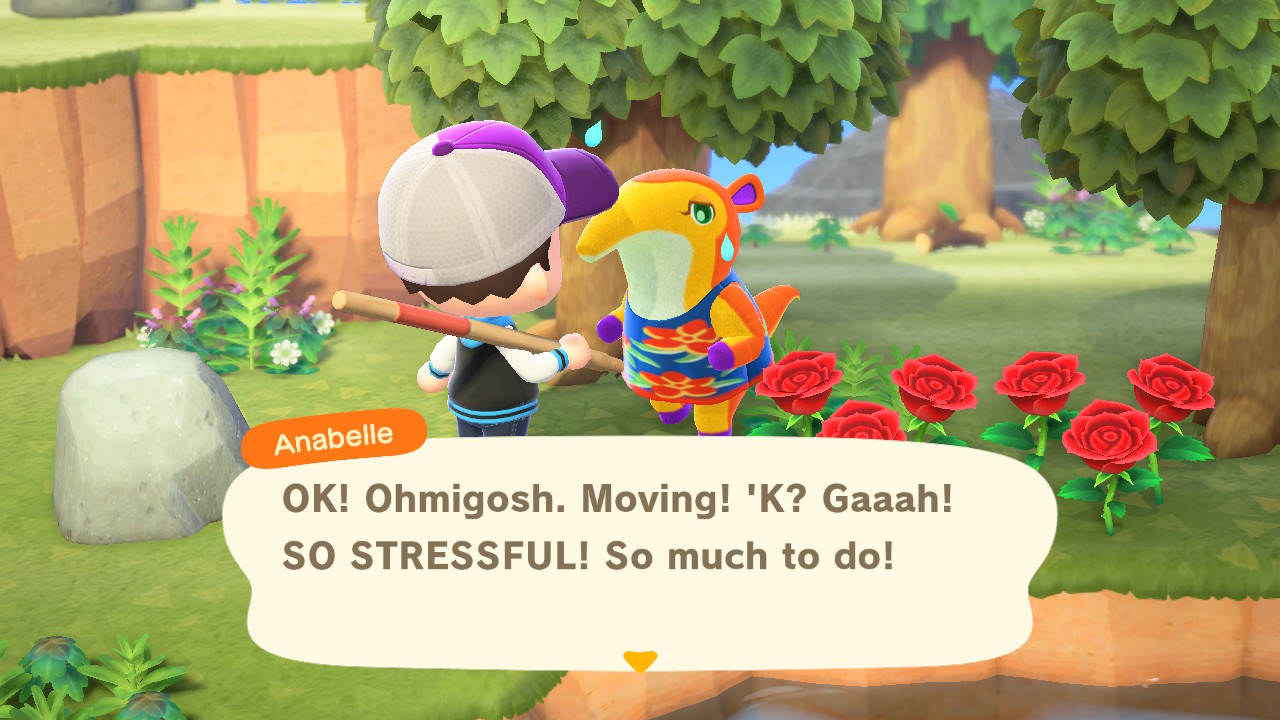
The biggest thing you’ll search for is iron nuggets. Trees produce three different kinds of wood, you will find plenty of trees to chop down (and you can now use a Stone Axe to just chip off what you need, without taking down the tree). However, there are only a few stones on your island.
Iron nuggets are used in crafting, particularly from upgrading “flimsy” tools into something that lasts a little longer. While the Nook Miles come thick and fast enough that you’ll usually be able to make several trips on the day a new project demands more materials, it can feel more scarce compared to wood.
After players have cleared their initial debt in Nook Miles, they can take on a new debt (strictly in Bells, the game’s currency) to turn their tent into a real house. At first, it seems like Bells are used for anything you personally want; extensions to your home, items in the shop, and relocating homes and facilities.
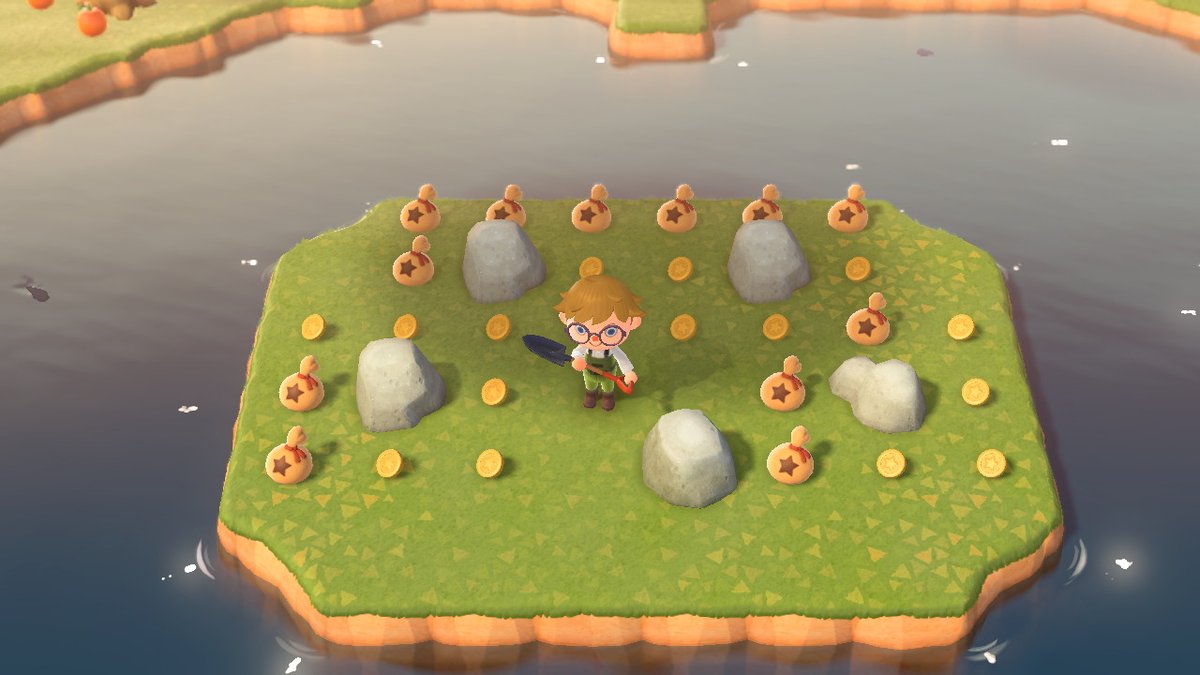
While you think Nook Miles would be used to help others or the island as a whole- this instead falls to materials and what you craft, (such as new facilities, and making villagers to move in).
The line does begin to blur, with a greater demand on decorating the island to improve its rank, Bells being needed for more bridges, and being able to turn Nook Miles into Bells.
As those familiar with the older Animal Crossing games can guess, Nook’s thirst for Bells can grow quite high, with the price of bridges and later home extensions sky-rocketing. Even so, there is never any demand or time-limit, and just gives players something else to reach for.
There is always plenty to sell, including washed up sea-shells, museum collectibles that you have already turned in (bugs, fish, and fossils), and even “hot items” (a randomly selected piece of furniture you can craft, that the shop will pay double for).
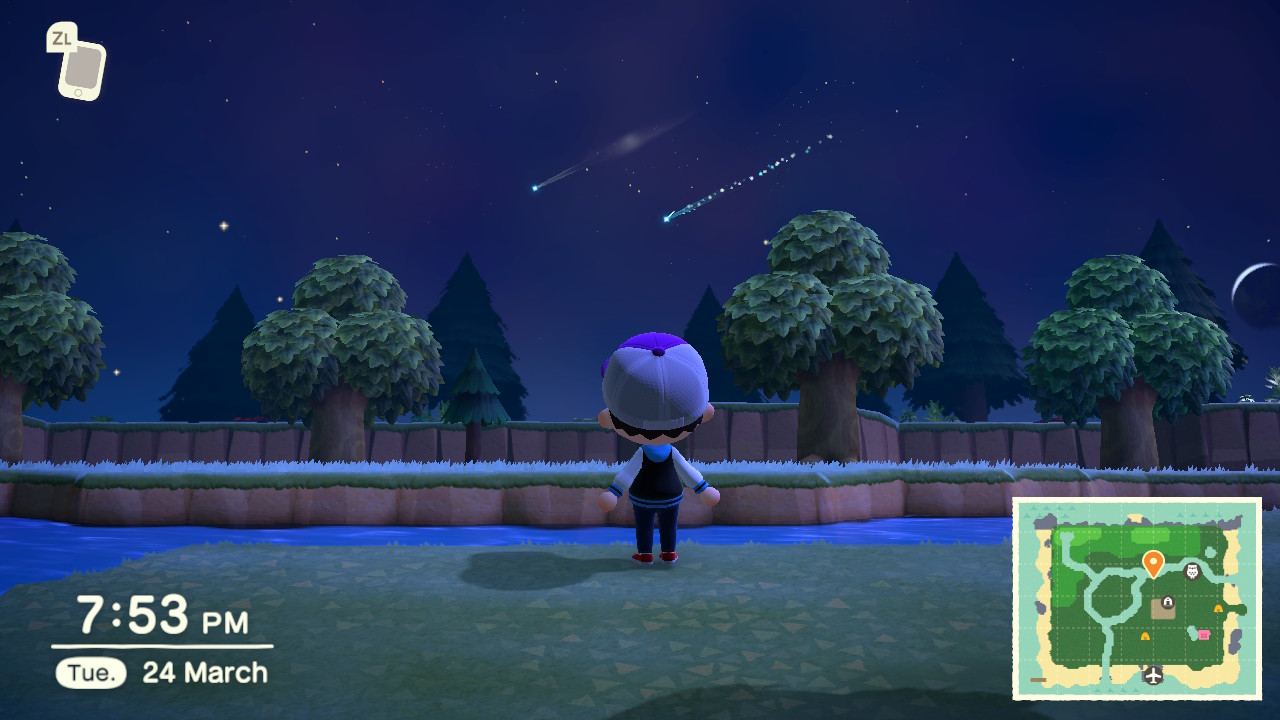
One of the main appeals comes from the slow burn of finding what you want, to finally make your island just as you want it. As most DIY recipes and villagers you find are also random, what turns up can also greatly effect your inspirations for how your island grows.
Even so, this can feel incredibly grindy. Progress can be halted by needing to wait until another day, and you will often have nothing else to do after a few hours of play. When you first begin, you are also unable to access all of your island.
Despite this, the villagers help to draw you in. While they only have a set number of personalities (all sharing the same dialogue bar a per-individual verbal tic), you end up reading far more into their interactions and dialogue.
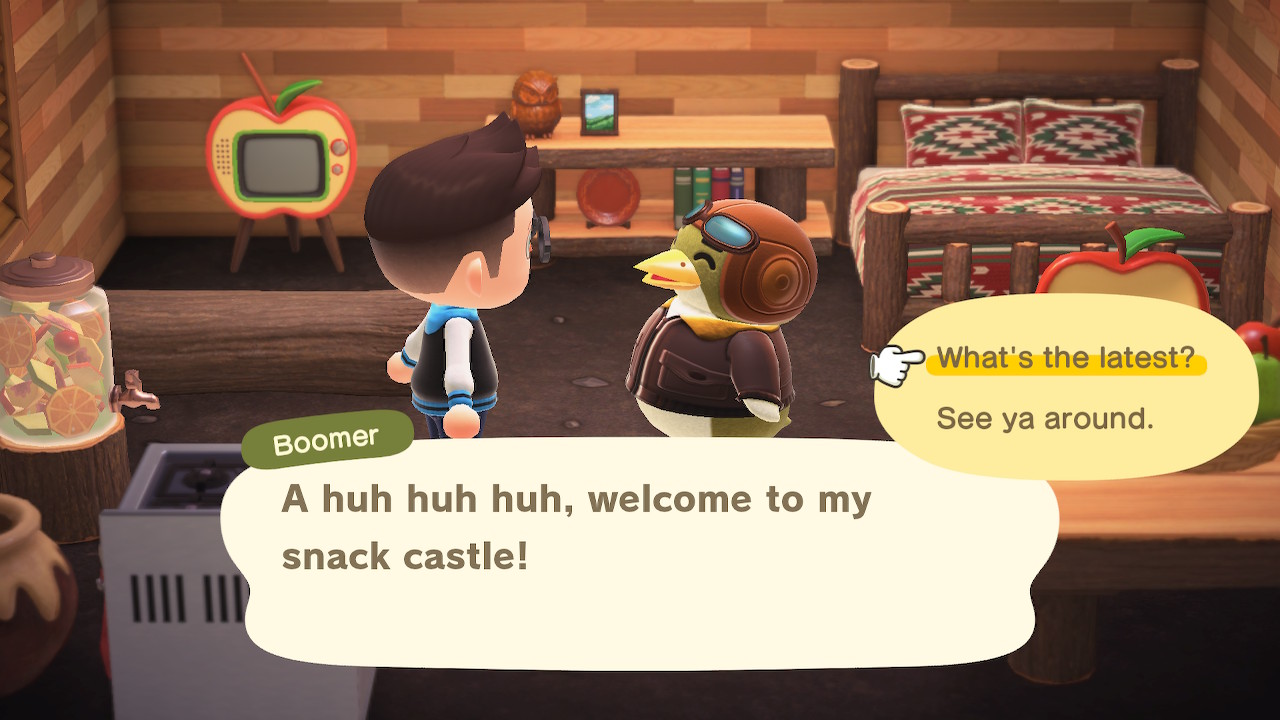
For example, I found a penguin called Boomer on another island. He talked about nature a great deal, and so when he moved in I picked a spot for his home surrounded by apple trees. To build his home, I then needed to make various furnishings inside and out- including an apple-themed TV, and chair.
This was due to the first three homes you build asking for furniture based on materials native to your island (one themed on the fruit, the flowers, and the trees). I didn’t know any better, but even now I feel like my Boomer takes “an apple a day” way too seriously, along with his other eccentricities.
It’s these little head-canons that make you care about the villagers; along with dialogue which is already very wholesome, adorable, and pretty funny at times.
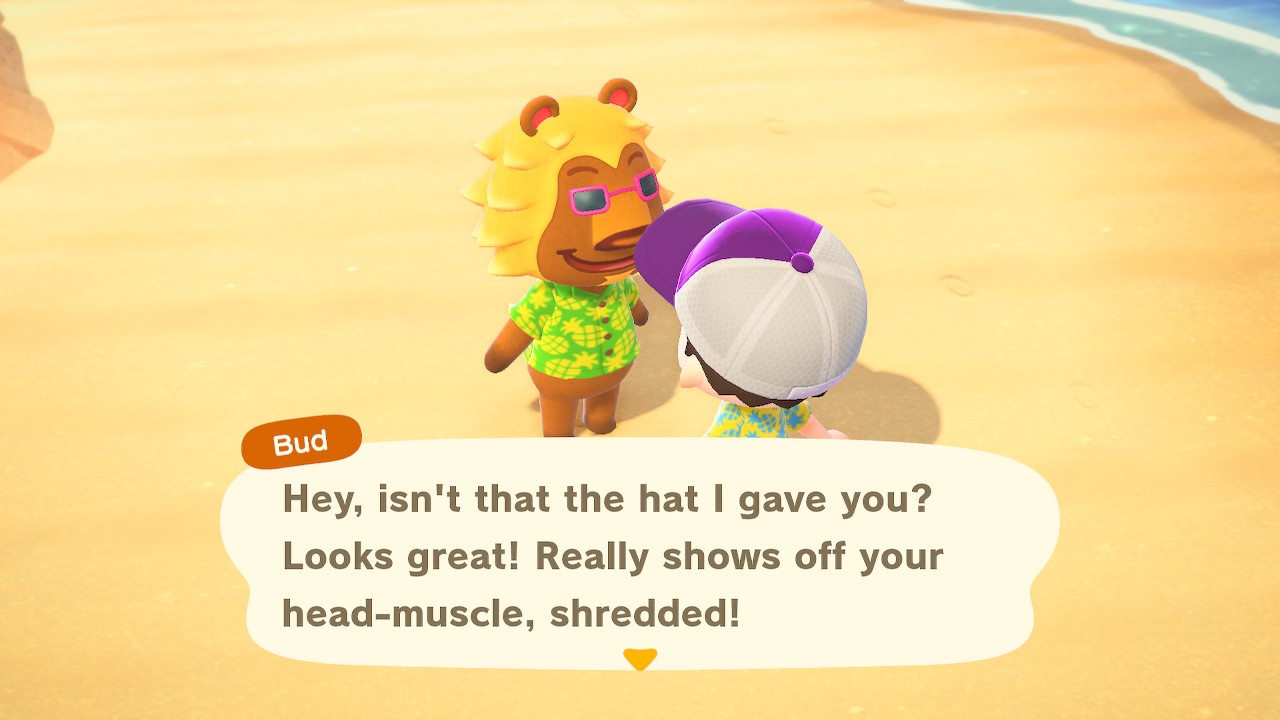
This is expanded further by small details. Villagers will comment on the clothes you wear, or what you just did. The museum curator Blathers even congratulated me on gathering enough specimens to build the museum in a day.
It’s simple to program a curtain being opened a few seconds after a villager has entered his home, or have them respond to you wearing the clothes they gave you, but it’s still a lovely touch.
The same applies to the world at large. Flowers will sway in the wind, or even from a wind source like a fan. Bugs will attempt to crawl under placed furniture to keep away from you. Some bugs will even rear-up as you approach them, then flee if you get closer (or charge, in the case of tarantulas).
It’s these small attentions to detail that seem amazing compared to more complex games, until you realize how Animal Crossing is simple. As there is no need to focus on split-second action mechanics, or balancing damage-outputs from bosses; the developers can, did, and had to focus on things like that.
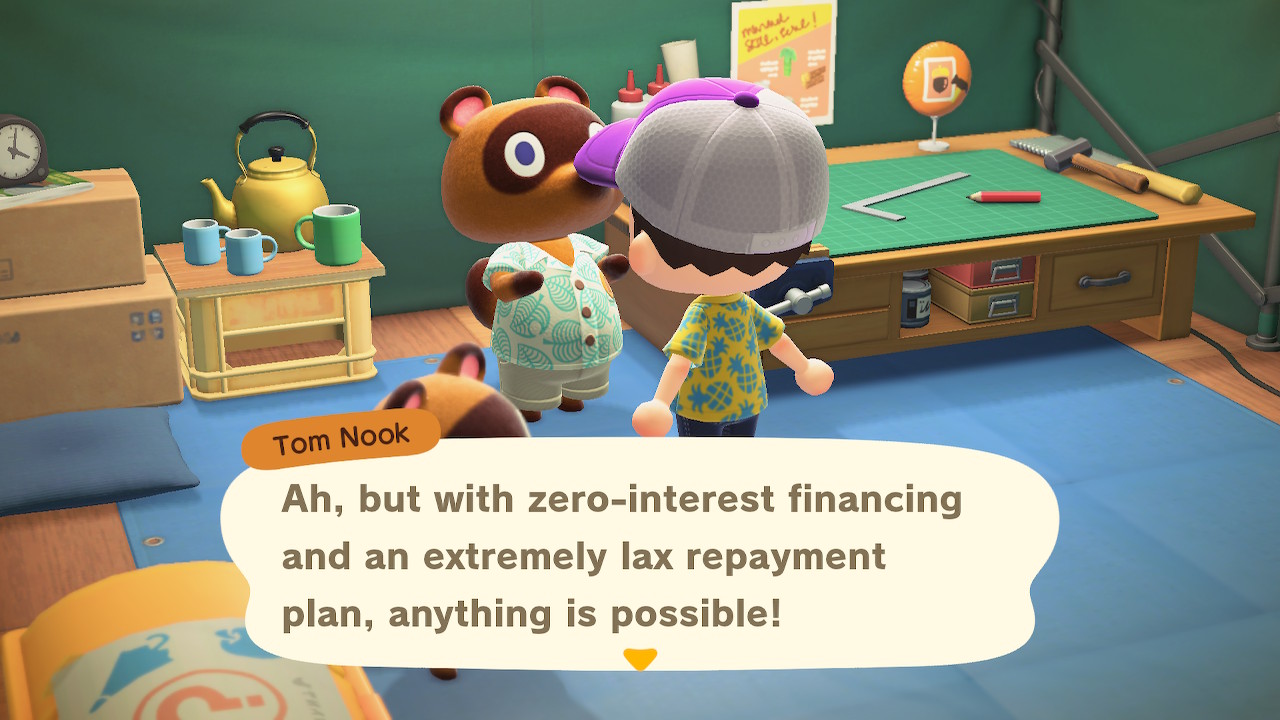
Even so, the series does need to grow a bit more. As the camera can move freely in homes, the ability to do so on the island would have been great. The series has always been built like a front-facing diorama, and being able to move the camera freely would have opened up new creative possibilities. The same could be said for objects only rotating at 90 degree increments.
As some crafting can use other items you make, or some objects you may wish to craft a large number of (such as fences), bulk crafting would have been much appreciated. The same can also be said for how some objects will not stack in your inventory, have too low a stack limit, or may not be placed in your home’s storage.
Other bugbears I have are truly minor. For example, you can turn in specimens in bulk to museum curator Blathers, but are then denied his descriptions of said specimens. Even the museum itself does not list what he would have stated, meaning you would need to find the specimen again.
You need to grind or wait to progress- and even then I acknowledge this may be personal taste. Getting everything you want too quickly would make the game a five-minute wonder, while this restraint makes you come back long after you have finished, to find new recipes.
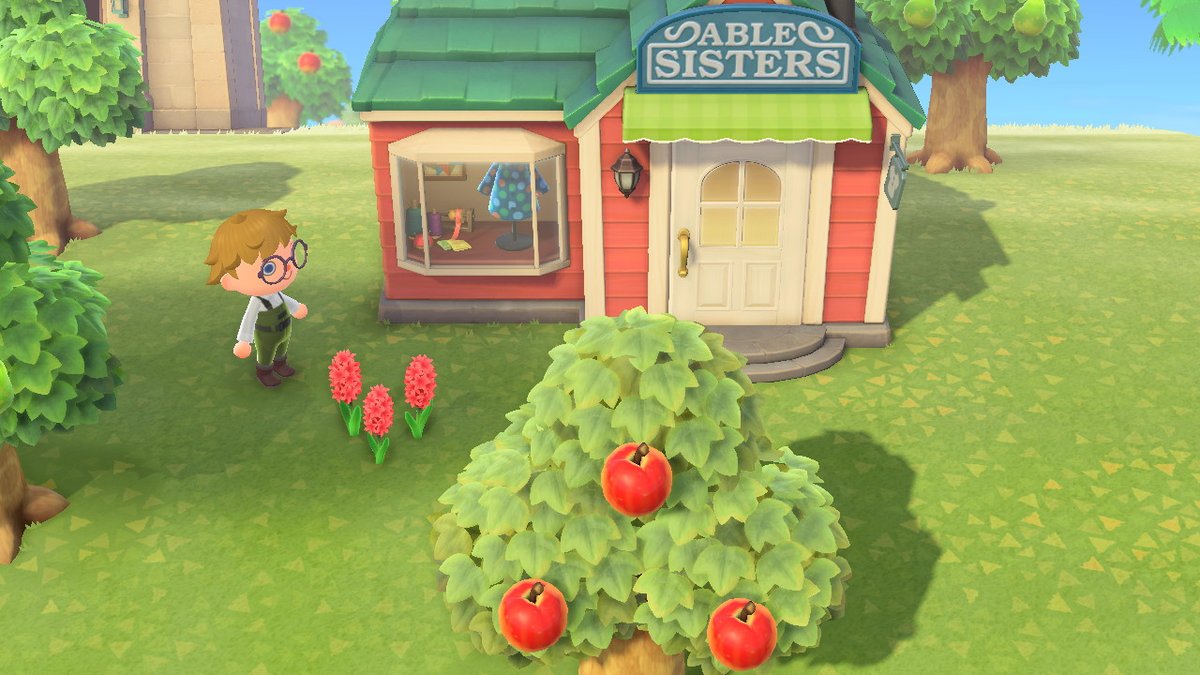
I do have one stand-out gripe that is a serious detractor. I must object to the game only allowing one island per console. The Nintendo Switch made it incredibly easy for families to share a console, and share the same games without affecting each-other’s progress. Yet, a first party Nintendo title took a massive step back. Knock a point or so off the final score if you wanted to share.
It may be to prevent making it too easy to acquire certain materials, but surely that small part of bonding would have been nice for families? Considering that online players can gift each other items, it just feels like a way to prevent local players from interacting unless they all have a Nintendo Switch.
I also feel individual users should also have had access to multiple save-files or islands. Due to the sheer number of potential villagers, and how many DIY recipes are randomly unlocked, players can be inspired to create many different islands. Though I will relent that managing multiple islands could become too deep of a time sink, and quickly wear-out the game’s charm.
Even so, I am content. The game is soothing, with just enough of a hook that you want to keep checking in. Whether it’s funny banter you read too much into, or getting that home just right, it’s great for those who want some R&R that’s actually engaging.
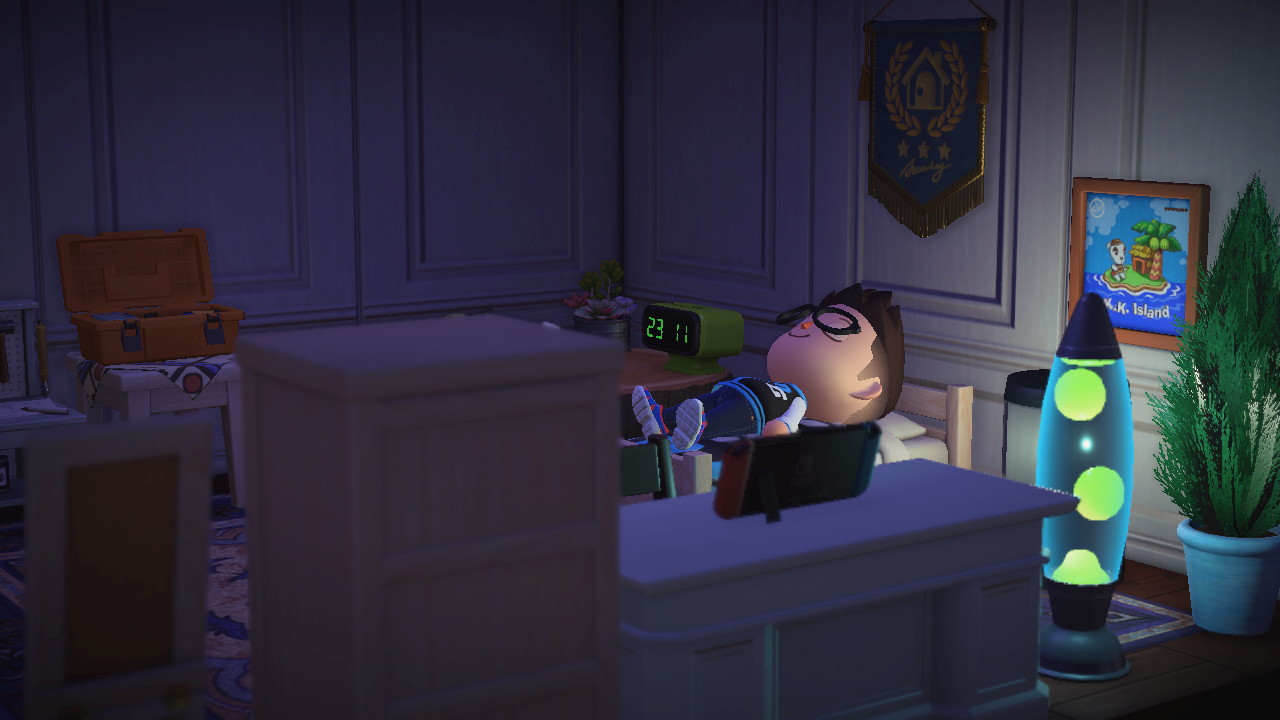
Graphically the game may be simple, but it’s through textures where the game shines. Sure it’s all cartoony and does not need to be terribly high-res, but the bright colors are backed by depth. Nearly every villager looks like they have thin velvety fur you can see, and trees have a slight realistic grain to them.
The grass seems practically carpeted, with the horizon dotted by small blades until you approach. Plants delightfully bob in the wind as aforementioned, and as you run by. Some objects have smaller details, like patches of rust, wire grating, or stitches.
Bugs are perfectly twitchy, fish swim around elegantly in the museum aquarium, and the dinosaur fossils are surprisingly realistic given everything else on display. And it all reacts to the light, and the weather in some cases.
Even a sold sign outside a home got bubbled and damp after a bout of rain. Backed with the soothing music tracks and the crash of the waves- this is comfy.
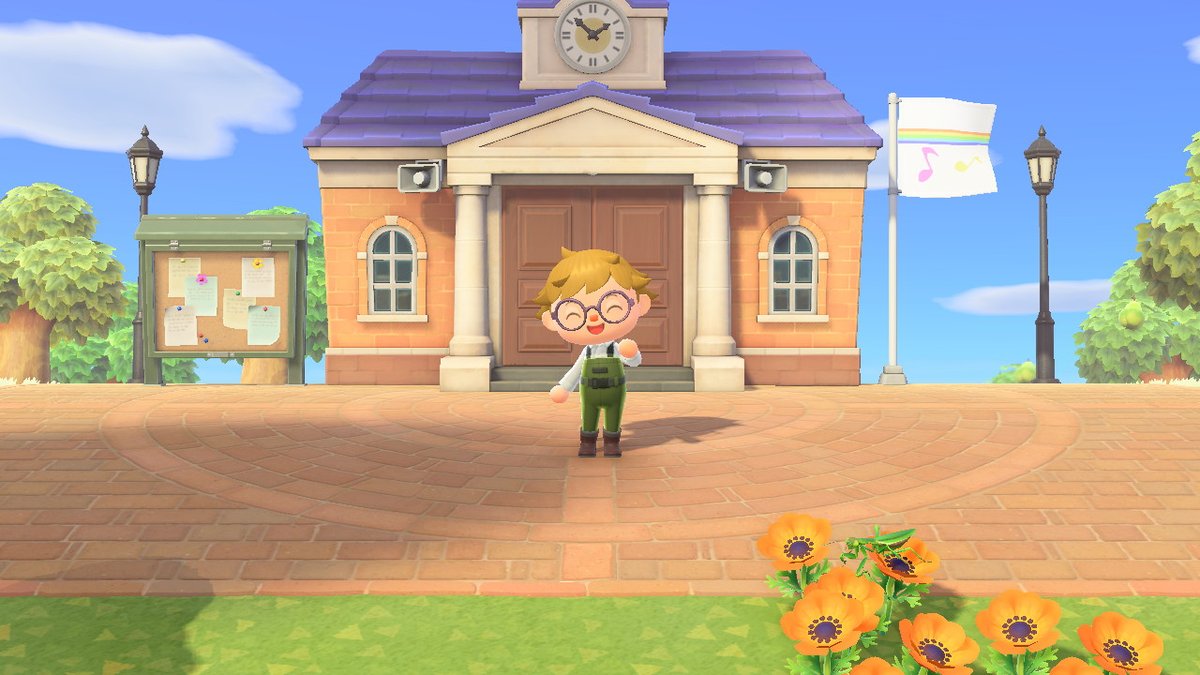
Speaking of the audio, the hourly tracks return- once the island is built up enough. K.K. Slider is back with a few new tunes, along with the classic Animal Crossing babble the villagers talk in. Hearing the odd word sound like, well, a real word still takes you off guard- all the while you grin like an idiot at the noise they make.
Footsteps will change depending on the terrain you are walking on, certain objects will get louder as you approach them, and bugs sound exactly like you think they should (even if they don’t make a noise in real life). Much like the villagers and visuals, these small details are noticed and contribute greatly.
In fact, that is Animal Crossing: New Horizons as a whole. Lots small details and progress, that build up over time into something greater. If you’re looking for a challenge or an epic quest, you won’t find it here. If you want a way to chill out, and build something you can take pride in (albeit, once), then Tom Nook has the perfect package for you.
Animal Crossing: New Horizons was reviewed on Nintendo Switch using a review copy provided by Nintendo. You can find additional information about Niche Gamer’s review/ethics policy here.